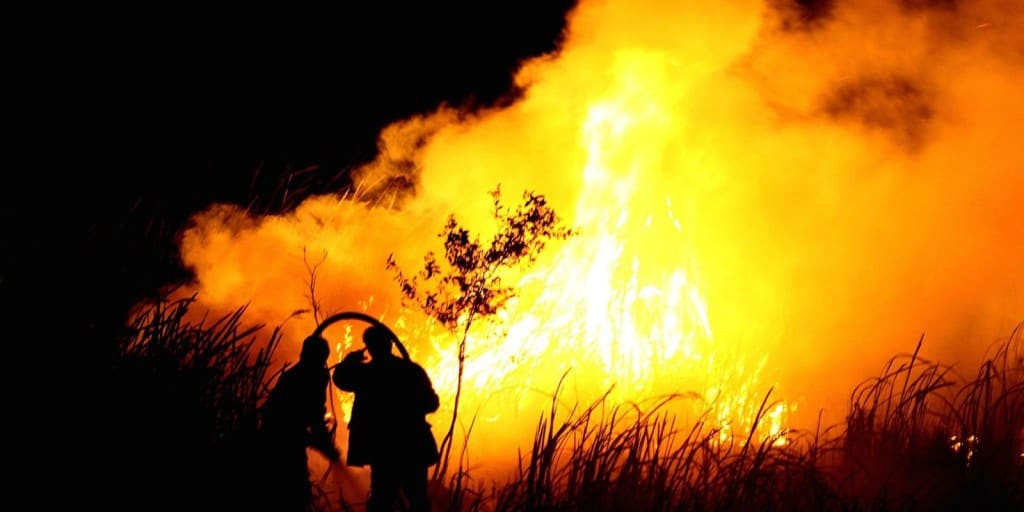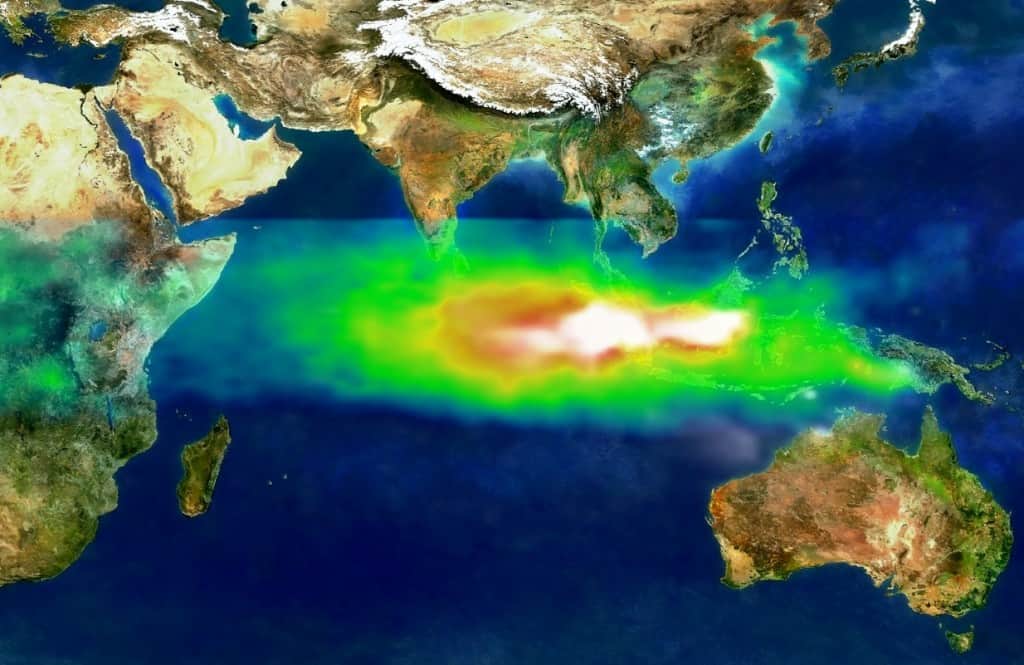
Are you aware that Indonesia has been burning since August, and in that time has contributed more CO2 emissions to the environment than the United States produces in one year? The entire situation has become very ‘hush hush,’ with few mainstream media sites sharing the extent and rippling effect of this horrendous disaster. Unfortunately, little is being done to tame the savage flames and, in effect, air pollution is the worst it has ever been in Indonesia.
Schools are being shut down, flights are being delayed, and orangutans are being eradicated, but government officials in Indonesia have yet to act and stop this crime against humanity. Why? Read on to discover some of the facts behind this man-made embarrassment, as well as how you can help raise awareness and be the change you wish to see.
-
The Cause Behind The Fires
Widespread fires are nothing new in Indonesia, where farmers regularly burn forests and peatlands to make way to produce palm oil. The ingredient is key in a variety of food and consumer products (including shampoo and ice cream), but is devastating to the environment to obtain.
TIME reports that the fires were started to clear forest land for agriculture, but have become an environmental disaster due to a severe drought caused by El Nino.
Because Indonesia is the world’s largest producer of the commodity, there is no doubt financial incentive is one of the motives to keep the fires lit. Just last year, plantations owned by Indonesian, Malaysian and Singaporean companies earned about $18.4 billion revenue, shares Herry Purnomo, a researcher at the Center for International Forestry Research. -
Where Are The Fires Occurring?
The fires are mainly burning in Sumatra and in Kalimantan, the Indonesian portion of Borneo. The Wall Street Journal reports that these once forest-rich islands are now largely covered in plantations.
Environmentalists often point to plantation firms as the fires’ culprits. Companies say it’s mostly local actors. Unclear land ownership adds to the finger pointing. Many parties are involved, and the fires happen in state forests, community-owned land and within plantation company concessions, Mr. Purnomo said. The Global Forest Watch reports that an online forest monitoring system created by the World Resources Institute, about 35% of the fires over the past week occurred in pulpwood, palm oil or logging concessions. -
What Impact Is This Having On The World?
It is estimated that economic costs to the region will reach close to $14 billion. Many of the costs come from damage caused by the fires, but there are also related impacts on health, the environment and tourism.
TIME reports that the particulate matter concentration (PM10), which measures small solid or liquid pollutant particles in the atmosphere, was 1,357-micrograms-per-cubic-meter air in the city of Palangkaraya, one of the worst hit areas, according to the Jakarta Post. There is no perfectly safe level of PM10 exposure, but the U.S. Environmental Protect Agency says particulate pollution shouldn’t exceed 150 micrograms per cubic meter for 24 hours in any given community.“It’s not just an environmental issue. It’s a public-health disaster as well,” said Nigel Sizer, global director of the World Resources Institute’s forests program. “When air is this poor quality, economic activity almost grinds to a halt.”

Credit: Wikipedia
The fires are also contributing to climate change at a massive scale — by one estimate enough to account for 3% of global emissions since this year’s fires began, according to a Scientific American report. Tearing down healthy forests — which absorb carbon dioxide — also destroys a vital carbon sink that can otherwise slow global warming.
The loss of forest cover also deprives wildlife of habitat and increases conflicts between endangered species such elephants and tigers and the communities near which they live.
According to The Wall Street Journal, fires on peat land, which currently accounts for about 40% of the burned area, unlock huge carbon stores which release climate-changing carbon dioxide into the atmosphere. This is incredibly important because Indonesia is working to reduce its emissions in time to meet a 2020 commitment. Greenpeace says 20% of the carbon emissions from Indonesia – one of the world’s biggest emitters – come from fires on peat. -
What Needs To Be Done To Stop It?
This environmental disaster – many suspect – stems from corporate greed. Plantation companies need to use land more productively rather than expand their concessions, and the government needs to better enforce laws that prevent forests and forested peatland from being developed for agriculture.
Indonesia’s president Joko Widodo renewed a ban on new licenses to log primary forest and peatland in May, but the results since the moratorium was first signed in 2010 have been little to celebrate.
Environmentalists believe restoration projects and strict law enforcement would help, as well as changing the complex network of economic interests that drives demand.“A complex patronage network comprising farmers, local officials and businessmen benefit enormously from the fires and needs to be eliminated,” said Mr. Purnomo. “Responsibility also rests with Malaysia and Singapore since companies based there reap many of the benefits of the sale of Indonesian palm oil.”
According to Greenpeace, the government should speed up work on a comprehensive land-use map that would include plantation concession information to better determine who owns what land.
-
What Is Being Done?
On a positive note, legislation has been put into place to prosecute companies found to be a cause of the haze.
In addition, some of the biggest pulp and paper and palm oil companies in Indonesia have made no-deforestation pledges, largely to meet sustainability commitments that allow them to export to companies in Europe and the U.S. Many have also put no-burn policies in place, which they say are applied to all of their suppliers.
Talk to locals in Indonesia, however, and you will discover that little action is being taken to put out the fires – despite money being offered from various countries to expel the flames and remedy the environmental crisis. -
How Can You Help?
Raise awareness by sharing this article and using the hashtag #BorneoIsBurning to draw attention to the issue. If enough activists come together and urge the Indonesian government to remedy this crisis, change will certainly ensue.
Comment your thoughts below.
This article (6 Need-To-Know Facts About The Fires Burning Up Indonesia) is free and open source. You have permission to republish this article under a Creative Commons license with attribution to the author and TrueActivist.com


